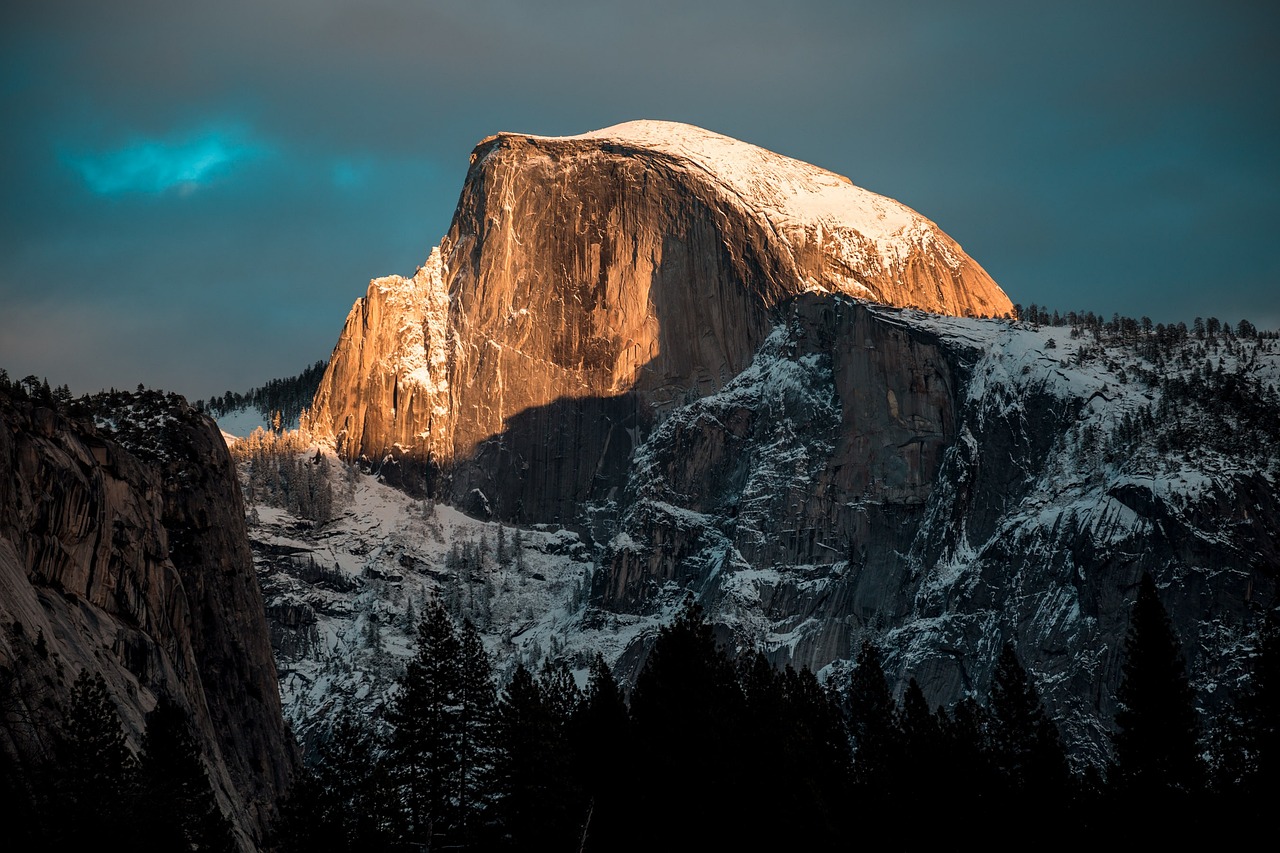Yosemite National Park, with its awe-inspiring granite cliffs, waterfalls, and diverse ecosystems, is a year-round destination. However, the best time to visit Yosemite depends on your preferences and what you want to experience. In this guide, we’ll explore the park’s seasons, weather, crowd levels, top attractions, and wildlife, helping you plan the perfect trip.
Best Time to Visit Yosemite National Park Based on Weather
Yosemite Valley, the park’s most popular area, has a Mediterranean climate, but conditions can vary depending on the season and elevation.
Spring (March to May):
Spring in Yosemite is a delightful time when the snow melts, and waterfalls are at their peak. Highs range from 53°F to 70°F (12°C to 21°C), while lows can drop to 28°F to 41°F (-2°C to 5°C). Be prepared for occasional rain, but the lush greenery and rushing waterfalls make it a picturesque season.
Summer (June to August):
Summer is Yosemite’s busiest season, with warm days and cool nights. Highs can reach 90°F (32°C), and lows are around 50°F to 60°F (10°C to 15°C). It’s ideal for hiking, camping, and exploring, but popular spots can be crowded, so plan and book well in advance.
Fall (September to November):
Fall is a favorite among many visitors. The weather is pleasant, with highs between 59°F and 76°F (15°C to 24°C) and lows from 32°F to 47°F (0°C to 8°C). The park’s foliage transforms into brilliant hues of red, orange, and yellow, creating a stunning backdrop for photography. Fall is perfect for hiking, and crowds start to thin out.
Winter (December to February):
Yosemite in winter is a serene wonderland, especially in the higher elevations where snow blankets the landscape. In Yosemite Valley, highs range from 46°F to 54°F (8°C to 12°C), with lows between 28°F and 36°F (-2°C to 2°C). Snowfall is common, making it an excellent time for winter sports and photography. Some areas close due to snow, so check park conditions.
Describe the Seasonal Changes and Best Experiences of Each
- Spring: Waterfalls are at their most impressive in spring, and the meadows burst with wildflowers. It’s the perfect time for photographers and nature enthusiasts.
- Summer: This season offers access to high-elevation trails, and you can enjoy outdoor activities like rock climbing, horseback riding, and biking. The Tioga Road opens up, granting access to Tuolumne Meadows.
- Fall: Autumn brings cooler temperatures and colorful foliage. Hiking, camping, and wildlife-watching are popular activities.
- Winter: Yosemite’s winter tranquility is ideal for cross-country skiing, snowshoeing, and ice skating in Curry Village. Don’t miss the opportunity to photograph the park’s iconic landmarks dusted in snow.
Best Time to Visit Yosemite Based on Crowds and Prices
- Crowds: Yosemite is busiest in summer, especially in June, July, and August. To avoid crowds, consider visiting in spring or fall when the park is less congested.
- Prices: Accommodation prices can be higher during the peak summer season. Booking in advance and visiting in the shoulder seasons can save you money.
Best Attractions of Yosemite and Best Time to See Them
- Yosemite Valley: Iconic landmarks like El Capitan, Half Dome, and Bridalveil Fall are accessible year-round. Spring for waterfalls, fall for colorful foliage, and winter for a snowy wonderland.
- Glacier Point: Visit in summer for panoramic views of the valley, or in winter for a serene snow-covered landscape.
- Mariposa Grove of Giant Sequoias: Open in spring through fall, this is the place to see giant sequoias, including the famous Grizzly Giant.
- Tuolumne Meadows: Accessible in summer, this high-country area offers hiking and stunning alpine scenery.
What Wildlife Can You See at Yosemite National Park?
Yosemite is home to diverse wildlife, and the best time to see them varies per species. It is quite possible that you will see deer, coyotes, and more all within the Yosemite valley.
- Black Bears: Most active in spring and summer, but can be seen year-round.
- Mule Deer: Commonly seen throughout the year.
- Coyotes: Active year-round, with increased sightings during summer.
- Bobcats: Mostly active at dawn and dusk; can be spotted year-round.
- Gray Foxes: Active year-round, with more sightings in summer.
- Bald Eagles: Best seen in winter near open water.
- Great Horned Owls: Active year-round; easier to spot in spring and early summer.
Conclusion
Yosemite National Park’s beauty knows no bounds, and the best time to visit depends on your interests and tolerance for crowds and weather. Spring and fall offer pleasant weather with fewer visitors, while summer is bustling with outdoor activities. Winter transforms the park into a serene snowscape. Regardless of when you visit, Yosemite promises unforgettable experiences and breathtaking natural beauty.

